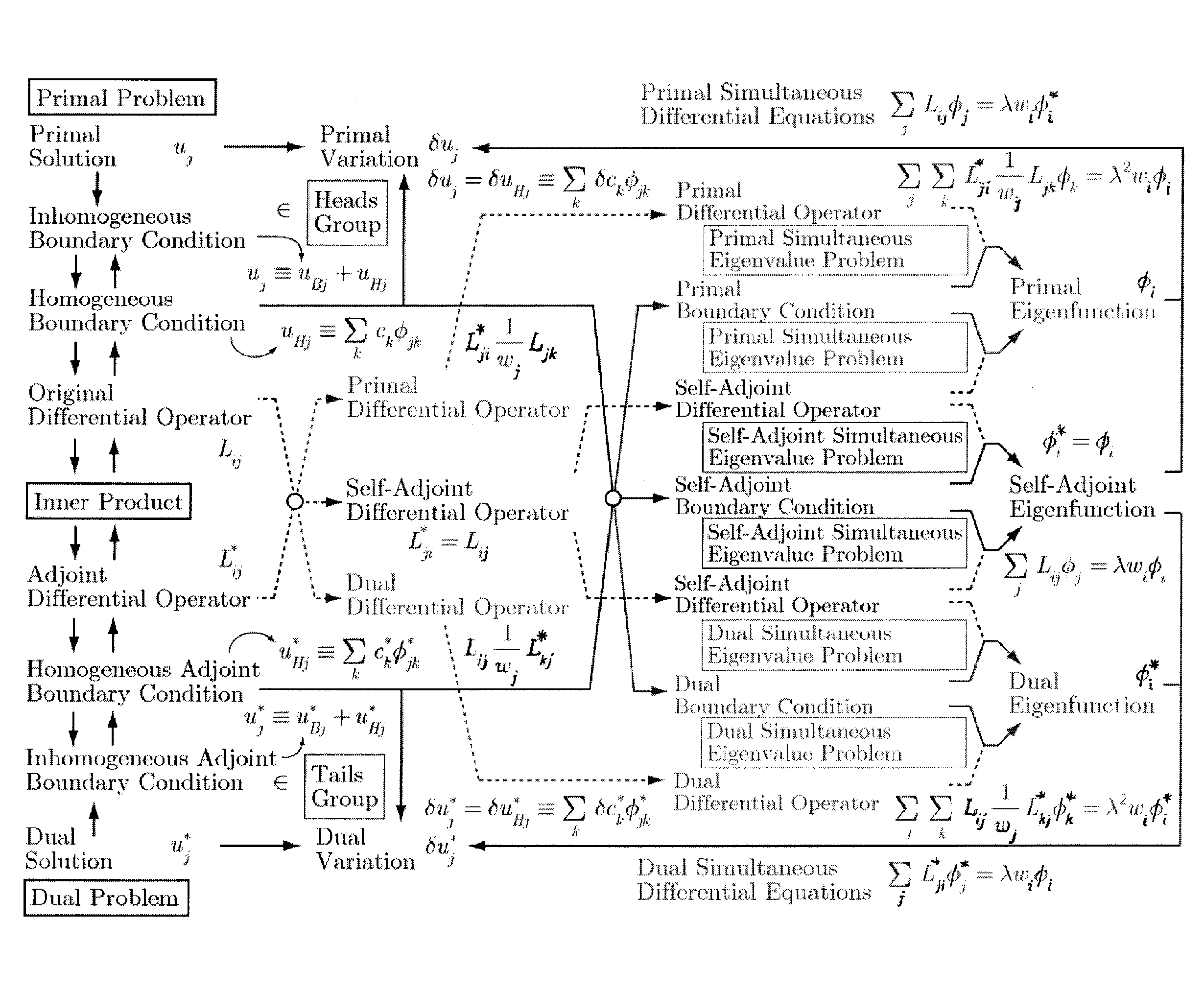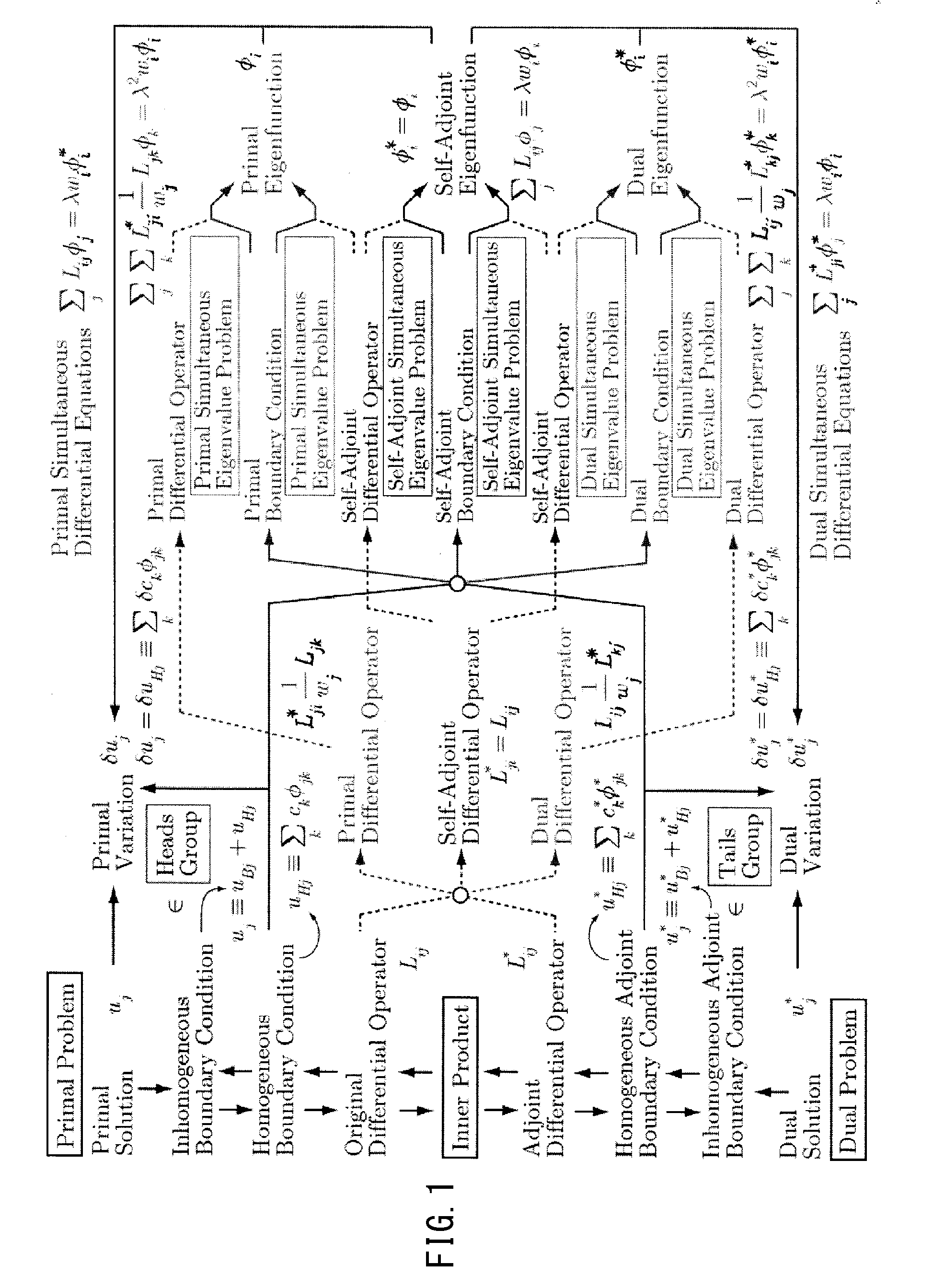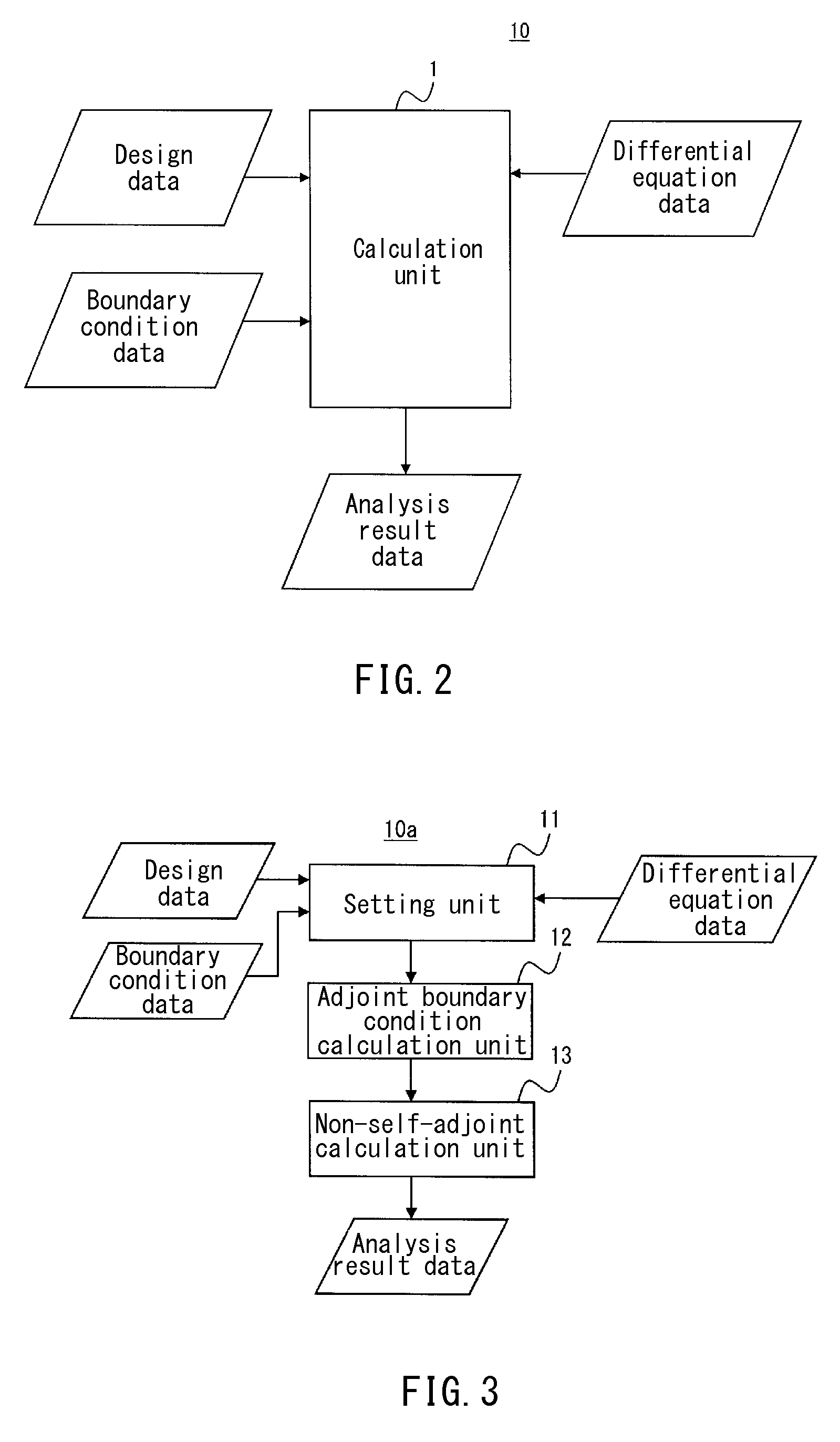Analyzer, analysis method, and analysis program
an analysis method and analysis program technology, applied in the field of analytical methods and analysis programs, can solve problems such as difficulty in general-purpose use of methods
- Summary
- Abstract
- Description
- Claims
- Application Information
AI Technical Summary
Benefits of technology
Problems solved by technology
Method used
Image
Examples
embodiment 1
[0477]FIG. 2 is a functional block diagram showing an exemplary configuration of an analyzer of the present embodiment. The analyzer 10 (analysis system 10) shown in FIG. 2 can be formed with a computer that includes a calculation unit 1. The calculation unit 1 inputs design data of an analysis object as well as differential equation data including boundary condition data and differential operators with respect to the analysis object; calculates solutions of the differential equations of the analysis object; and outputs the same as analysis result data. Here, the calculation unit 1 calculates a solution uj by the following equation where a variation of a dual displacement ui* is given as a dual variation δui*. The following equation is the same as eq. (122).
∑i∫S(∑jLijuj-fi)·δui*s=0[Formula1]
[0478]For example, the calculation unit 1 inputs, as design data, data that show the shape and material of an analysis object, and reads data of an original differential operator Lij to be used i...
modification example 1
[0480]The calculation unit 1 may calculate a solution uj by the following equation. The following equation is identical to the above-described eq. (123). In this case, a solution of a self-adjoint problem can be calculated.
∑i∫S(∑jLijuj-fi)·δui*s=0[Formula2]
modification example 2
[0481]The calculation unit 1 can calculate a solution uj of an analysis object by the following equation, by the direct variational method. The following equation is identical to the above-described eq. (127).
∑i∫S(∑iLijuj-fi)·δ∑jLijui*s=0[Formula3]
[0482]In the calculation of a solution uj by the direct variational method, a solution such that a variation is zero may be calculated in the functional Π of the following equation.
Π≡∑i∫S(∑jLijuj-fi)2s.[Formula4]
PUM
 Login to View More
Login to View More Abstract
Description
Claims
Application Information
 Login to View More
Login to View More - R&D
- Intellectual Property
- Life Sciences
- Materials
- Tech Scout
- Unparalleled Data Quality
- Higher Quality Content
- 60% Fewer Hallucinations
Browse by: Latest US Patents, China's latest patents, Technical Efficacy Thesaurus, Application Domain, Technology Topic, Popular Technical Reports.
© 2025 PatSnap. All rights reserved.Legal|Privacy policy|Modern Slavery Act Transparency Statement|Sitemap|About US| Contact US: help@patsnap.com



